

Story and images by Alison Gardner, Editor of Travel with a Challenge
During an 18 day exploration of the western half of Turkey, travel journalist, Alison Gardner, and eleven fellow travelers on an ElderTreks cultural tour discovered that Turkish Delights not only come in a box: they are scattered around every corner and over every hill, waiting to be nibbled and savored!
In this first snapshot, our ElderTreks group assembled for one of the many memorable meals together, this time overlooking the fabulous Blue Mosque and the Sea of Marmara, as daylight gave way to the sparkling lights of one of the world’s great cities.
The enormous peninsula of Anatolia, jutting forcefully into the eastern Mediterranean is officially part of Asia, covering all but 3% of present-day Turkey. That 3% is officially in Europe, physically and symbolically establishing the country at a critical crossroads that has determined its multi-layered history and culture. The land has been occupied by so many conquerors and called by so many names through countless millenia that Turkey is influential beyond all proportion in our collective western history, philosophy, religious thought, art, architecture, literature, and much more.
I walked the ruins of the world’s oldest “city” dating from 7,500 BC. I wandered through restored streets of the fabulous Greek and Roman city of Ephesus, with its theatre seating 25,000 people and the third largest library in the ancient world. I followed in the footsteps of early Christian apostles who trod much of this land on foot, and even the footsteps of Mary, the mother of Jesus, who came to live in the hills above Ephesus. Much of Old Testament biblical history – Job, Abraham, Noah and his ark — also unfolds across this land well before Greeks, Romans and Ottoman Turks left their own distinctive stamps.
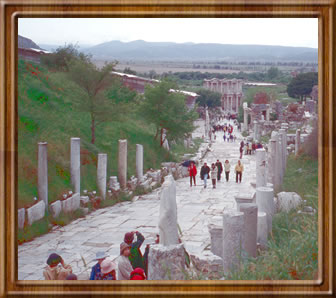
Two thousand years ago, a marble Roman road into Ephesus served a population of 250,000 citizens and slaves. Though only 15% of Ephesus has been excavated, it is still the largest and best-preserved classical city in Turkey. Excavation projects sponsored by countries and organizations around the world continue each year.
;
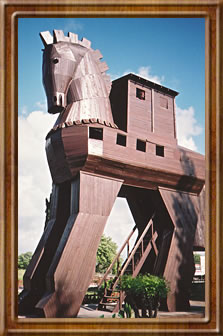
The original Trojan Horse, delivered by the Greeks to the gates of Troy around 1250 B.C., is known only by description. Did it look like this replica at the present-day remains of Troy?
I looked over the sprawling battlements of the near-mythical Troy, complete with a full size replica of the horse that was to be the kingdom’s downfall. Guess where Homer, the blind poetic chronicler of the Trojan War, called home? The coast of Anatolia.
The Turks claim they have more Greek sites than Greece and more Roman sites than Italy. I would have been skeptical before I entered Turkey, but it’s no longer much of a mental stretch. There are also hundreds of Byzantine Christian churches, cathedrals and spectacular underground churches occupying rock caves throughout Turkey, all dating back 1,000 to 1,500 years. Like the Greek and Roman sites, they are carefully restored to serve as impressive museums to the longstanding Christian roots of this largely Moslem land.
![]()
Following a sleepless non-stopover flight of 17,000 kilometers that put me into Istanbul past midnight, I had been gratefully enjoying the sleep of the dead in my hotel’s bed chamber when I surfaced to a totally unfamiliar sound not far beyond my window. A hauntingly lyrical dual between two competing mosques welcomed the dawn in this great crossroads city with the obvious intent of getting the attention of the faithful. Yes, it was five a.m. Turkish time my clock confirmed. I smiled contentedly and curled up to sleep off my jet lag for three more hours before breakfast roll call.
That first morning I sampled a buffet breakfast on the roof of our small hotel, featuring the classic two-person-plus-one-piece-of-luggage elevator. In this first daylight orientation, my 360 degree turnaround told me that I was in the heart of Istanbul, with a clear view of the Blue Mosque and its expansive fountain-filled gardens a block in one direction, and the equally large and beautifully proportioned Greek Orthodox church, Hagia Sophia, completed in 537 AD, just a few blocks in the other direction.
Right there on that roof, I figured I had already got my money’s worth on this trip. The Moslem call to prayer, “God is great, there is one God, and Mohammed is his prophet”, offered up five times a day from every minaret in every town and city in Turkey, proved to be a delightful, persistent reality check that I was lifting a curtain, however briefly, on a very different culture and country from my own.
In the next couple of days we cruised the shoreline of the fabled Bosphorus and through the Dardenelles and explored enormous pillared underground water reservoirs built by Roman town planners with very big and rather elegant ideas. We admired crusader castles, palaces, mosques, exquisite gardens and great manor houses, and visited market places selling the proverbial soup to nuts mélange of colorful delights. In one such market, I tasted for the first time Turkish Delight as it should be!
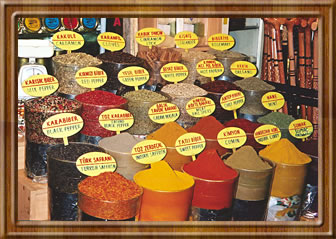
A visit to Istanbul’s fabled Spice Market is both a visual and olfactory delight.
>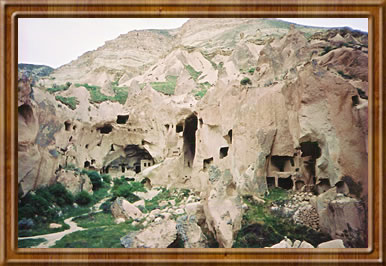
Built over 2-3,000 years, Cappadocia’s numerous rock towns set deep in the valleys of Central Turkey clustered up to 5,000 people in multi-storey communities carved from the soft volcanic stone. Constant natural erosion of this unique and highly prized region is gradually leading to the collapse of rooms, rock churches and communal gathering places both above ground and underground.
![]()
The Turks might well view the increasing tourist hordes as another disagreeable and often destructive invasion akin to the Hittites, Persians, Greeks, Romans, Goths, Byzantine Christians, European Crusaders and Ottomans. In fact, I think I can say with confidence that our deliberately low-impact group of 14 ElderTrekers laid a pretty solid foundation of goodwill during our cultural exploration of western and central Turkey.

At the archaeological site of Aphrodisias, a 270 meter-long Roman stadium, dating from 400 A.D., seated 30,000 spectators who enjoyed races, gladiator contests and animal fights.
We experienced rural hospitality in village homes and on a horse training and riding farm, where customs were very different from our own. In the exquisite United Nations World Heritage town of Safranbolu, we were assigned rooms in a tall wooden mansion originally built by the Grand Vizier of the Ottoman Empire 410 years ago. Its creaky narrow staircases and characteristic carpets and furnishings clearly revealed a different time and culture.
We sampled home cooked meals in family courtyards, regional cuisine in a renovated Greek Orthodox school, and the abundance of the countryside in a picturesque olive orchard. We also sampled some of the finest restaurants Turkey has to offer where our conscientious guide, Gülin, always made sure we knew what dishes would best reveal Turkey’s grand array of specialties.
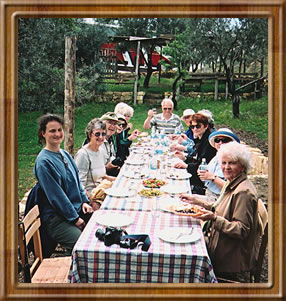
A many-course home-cooked lunch tasted even better for being served up in a country olive grove.
And to our considerable surprise, the children and teenagers were never suspicious or nervous, spontaneously volunteering a greeting and a wave. Always, we made ourselves available for English language practice with enthusiastic swarms of school children and teens, while smiling teachers looked on. They seemed to be on perpetual field excursions, and why not, in a country where the entire country is so rich with classroom experiences?

A traditional sailing gulet is a perfect small hotel for an exploration of islands along Turkey’s southwest Turquoise Coast.
Aboard a traditional gulet (coastal sailing vessel) on our three-day sailing trip of Turkey’s Turquoise Coast, we anchored each evening in a protected south Aegean cove and fell asleep to gentle waves lapping against the wooden hull. The third day out we approached the captain to ask if his dashing young deck hand would ferry us back and forth from shore in a small outboard to execute a bit of a pre-dinner beach cleanup. Somewhat puzzled, he graciously agreed, and an hour-and-a-half was well spent as the sun went over the yardarm.
On our final morning, we joyously sailed into port with a stack of blue garbage bags piled on the ship’s deck, content that we had returned some areas to a pristine state, albeit temporarily. After all, we agreed, the majority of what we had picked up was most likely tourist-generated droppings anyway.
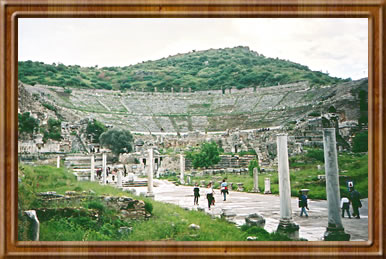
St. Paul never did get to address the Ephesians in this 25,000 seat theatre because the lobbyists for the Roman goddess, Artemis, chanted themselves hoarse for two hours straight in order to stop him. Instead he went away and wrote down his thoughts in a letter to the Christian Ephesians that subsequently became part of the Bible. If he had got to make his speech, would he ever have committed to paper those memorable documents?
![]()
The diversity of landscape and geography, the well preserved archaeological sites often with backdrops that defy description, and the rich tapestry of cultural and religious history all provide the best of reasons to visit Turkey. However, it was the Turkish people throughout our journey who made the difference, not the least of which were the team who put up with us for 18 days – a long time in the world of guiding!

Strong-brewed tea, not coffee, is the national drink of Turkey, and a symbol of hospitality. It is served everywhere and often!
Our guide, Gülin, a cultural scholar and artist, went so far beyond the measure of a competent tour leader that we all wanted to take her home forever. Gülin’s musical laughter erupting at the least provocation and her boundless enthusiasm for Turkey’s many treasures were truly infectious, even when one of us had woken up planning to have a grumpy day. I will never forget her solemnly demonstrating a country dance from her childhood on the floor of a vast Greek amphitheatre, a tiny solitary figure far below the marble seats from which we cheered her on.
Though there was an almost complete language barrier between us and our dashing driver, Ismet, we communicated with him as though he were a brother. His spontaneous little gifts and thoughtful suggestions, the heartfelt insights about his wife’s and children’s future (shared with Gülin as translator), and his unfailing and sober encouragement of our fractured Turkish will always be remembered.
Arriving on the dock several hours before he had to meet us with the bus, Ismet greeted us with such emotion as we disembarked from our gulet, that we could not deny his declaration about how seriously he had missed us. Why this man even stopped the bus for a turtle crossing the road!
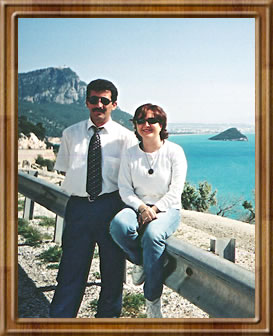
Ismet, our driver, and Gülin, our Turkish guide, were memorable ingredients of a memorable trip!
FOLLOW UP FACTS
April through October are the best months to visit Turkey. The shoulder seasons are recommended to avoid both the heat and crowds of mid-summer.
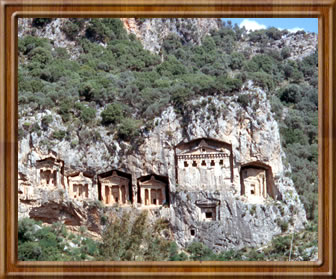 ElderTreks’ offers its Turkey tour in April and October. Since 1992, ElderTreks has specialized in itineraries that take mature (50+) travelers off the beaten path and behind the scenes to explore new environments and interesting cultures throughout the world. There are currently over 80 countries on their destination list, many that will have you scrambling for an atlas! While the 18-day Turkish itinerary, rated Easy, is one of the least challenging tours physically, it covers a great many of the country’s highlights in an impressively educational and culturally enriching way. www.eldertreks.com.
ElderTreks’ offers its Turkey tour in April and October. Since 1992, ElderTreks has specialized in itineraries that take mature (50+) travelers off the beaten path and behind the scenes to explore new environments and interesting cultures throughout the world. There are currently over 80 countries on their destination list, many that will have you scrambling for an atlas! While the 18-day Turkish itinerary, rated Easy, is one of the least challenging tours physically, it covers a great many of the country’s highlights in an impressively educational and culturally enriching way. www.eldertreks.com.
Homework is Half the Fun: Lonely Planet’s PDF guidebook, Turkey [16th edition, 2022] is an excellent overall reference to the country and culture. Within the country and offered at a very reasonable price, you will also find informative four-color guides in English to help you unravel every archaeological site.
Websites:
www.about-turkey.com
See more richly-illustrated Turkey travel articles on this website, hotlinked below by their photo buttons.
Photo above: Rock cut tombs of Lycian kings located high on a cliff face date from 500 B.C.
Alison Gardner is a travel journalist, magazine editor, guidebook author, and consultant. She specializes in researching alternative vacations throughout the world, suitable for people over 50 and for women travelers of all ages. She is also the publisher and editor of Travel with a Challenge Web magazine.
Email: alison@travelwithachallenge.com
![]() Click on image below to go on a Balloon Ride in Cappadocia
Click on image below to go on a Balloon Ride in Cappadocia 
Click on image below to learn about carpet buying in Turkey 


